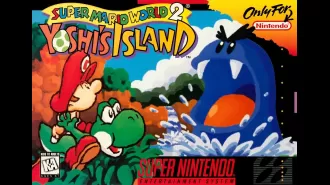Tips for effectively leading and managing teams with members from different generations to achieve success.
Five different age groups make up the current workforce: traditionalists, baby boomers, Gen Xers, millennials, and Gen Zers.
April 10th 2024.

As the workplace continues to evolve, one of the biggest challenges faced by managers today is leading teams comprised of individuals from different generations. With five distinct generational cohorts - traditionalists, baby boomers, Gen Xers, millennials, and Gen Zers - each bringing their own unique experiences, values, and approaches to work, it can be difficult to foster collaboration and harmony among such diverse groups. However, it is crucial for both the success of the team and the business as a whole.
As the founder and CEO of Reimagine Talent Co., I have seen firsthand the struggles that leaders and managers face when it comes to managing multigenerational teams. With retirement patterns shifting and individuals working longer than ever before, older generations are still present in the workplace - especially due to the COVID-19 pandemic and financial constraints. On the other hand, younger generations like Gen Z are eager to advance quickly and take on leadership roles. With such a wide range of perspectives and expectations, it's easy for misunderstandings and frustrations to arise between coworkers of different generations.
But the truth is, all organizations can benefit from learning how to effectively lead across generations. By understanding the unique characteristics and preferences of each generation, we can build, engage, and retain a diverse and multigenerational workforce.
First and foremost, it's important to clarify what generational analysis actually means and how it can provide valuable insights into the different cohorts within today's workforce. Taking a closer look at the Pew Research Center's findings about each generation can help us better understand their work styles and expectations from managers.
Let's start with Generation Z, born between 1997 and 2012. This generation is used to constant change and expects it in the workplace. They value in-person interactions and crave frequent and ongoing feedback. On the other hand, millennials - born between 1981 and 1996 - prefer to be coached and mentored, and they thrive in collaborative and technology-driven environments. However, they also place a strong emphasis on company values and expect their managers to align with them.
Moving on to Gen Xers, born between 1965 and 1980, we see a group that views change as an opportunity for growth. They tend to prefer a hands-off management approach and are known for their entrepreneurial mindset and results-driven mentality. Then there are the baby boomers, born between 1945 and 1964, who may have a more reserved communication style but value traditional forms of training and appreciate ethical and fair management.
Finally, there are the traditionalists, born before 1945, who believe in hierarchical management styles and have a strong work ethic and loyalty to their employers.
By understanding the characteristics and preferences of each generation, we can bridge the gap and effectively lead multigenerational teams towards success. It's time to embrace the diversity and unique strengths that each generation brings to the table and create a collaborative and inclusive workplace for all.
As the founder and CEO of Reimagine Talent Co., I have encountered one of the most pressing challenges faced by managers today – effectively leading multigenerational teams. In today's workplace, there are five generational cohorts – traditionalists, baby boomers, Gen Xers, millennials, and Gen Zers – each bringing unique experiences, values, and approaches to work.
For businesses and teams to succeed, it is crucial to foster harmony and collaboration among these diverse cohorts. However, this is easier said than done. My team and I have worked with leaders and managers who struggle with multigenerational team dynamics. With retirement patterns shifting and individuals working longer due to the COVID-19 pandemic and financial need, baby boomers and traditionalists are still in the workforce, especially among communities of color. On the other hand, Gen Z is eager for opportunities to advance quickly and take on leadership roles. With such different mindsets, it is natural for conflicts to arise.
All organizations can benefit from learning how to lead across generations to build, engage, and retain a multigenerational workforce. To do so, it is essential to understand each generation's characteristics and work styles.
First, let's clarify what generational analysis means and how it helps shape insights into the different cohorts in today's workforce and workplace. Then, we can look at the Pew Research Center's findings on each generation, including a few key characteristics that affect their work styles and expectations from managers.
Generation Z, born between 1997 and 2012, is accustomed to change and expects it in the workplace. They value in-person interactions and seek feedback on a frequent, ongoing basis.
Millennials, born between 1981 and 1996, want to be coached and mentored. They prefer collaborative and technology-centric training and must be in alignment with the company's values.
Generation X, born between 1965 and 1980, views change as a vehicle for opportunity. They embrace a hands-off management policy and are entrepreneurial and results-oriented.
Baby Boomers, born between 1945 and 1964, have a more reserved communication style. They value traditional instructor-led courses or self-learning tools and appreciate managers who are ethical, fair, and consistent.
Lastly, traditionalists, born before 1945, believe in hierarchical management styles. They have a strong work ethic and loyalty to their employers.
With such diverse backgrounds and values, it is no wonder that each generation may have different expectations and approaches to work. As managers, it is crucial to understand these differences and find ways to bridge the gap, fostering a more harmonious and productive work environment for all generations.
As the founder and CEO of Reimagine Talent Co., I have seen firsthand the struggles that leaders and managers face when it comes to managing multigenerational teams. With retirement patterns shifting and individuals working longer than ever before, older generations are still present in the workplace - especially due to the COVID-19 pandemic and financial constraints. On the other hand, younger generations like Gen Z are eager to advance quickly and take on leadership roles. With such a wide range of perspectives and expectations, it's easy for misunderstandings and frustrations to arise between coworkers of different generations.
But the truth is, all organizations can benefit from learning how to effectively lead across generations. By understanding the unique characteristics and preferences of each generation, we can build, engage, and retain a diverse and multigenerational workforce.
First and foremost, it's important to clarify what generational analysis actually means and how it can provide valuable insights into the different cohorts within today's workforce. Taking a closer look at the Pew Research Center's findings about each generation can help us better understand their work styles and expectations from managers.
Let's start with Generation Z, born between 1997 and 2012. This generation is used to constant change and expects it in the workplace. They value in-person interactions and crave frequent and ongoing feedback. On the other hand, millennials - born between 1981 and 1996 - prefer to be coached and mentored, and they thrive in collaborative and technology-driven environments. However, they also place a strong emphasis on company values and expect their managers to align with them.
Moving on to Gen Xers, born between 1965 and 1980, we see a group that views change as an opportunity for growth. They tend to prefer a hands-off management approach and are known for their entrepreneurial mindset and results-driven mentality. Then there are the baby boomers, born between 1945 and 1964, who may have a more reserved communication style but value traditional forms of training and appreciate ethical and fair management.
Finally, there are the traditionalists, born before 1945, who believe in hierarchical management styles and have a strong work ethic and loyalty to their employers.
By understanding the characteristics and preferences of each generation, we can bridge the gap and effectively lead multigenerational teams towards success. It's time to embrace the diversity and unique strengths that each generation brings to the table and create a collaborative and inclusive workplace for all.
As the founder and CEO of Reimagine Talent Co., I have encountered one of the most pressing challenges faced by managers today – effectively leading multigenerational teams. In today's workplace, there are five generational cohorts – traditionalists, baby boomers, Gen Xers, millennials, and Gen Zers – each bringing unique experiences, values, and approaches to work.
For businesses and teams to succeed, it is crucial to foster harmony and collaboration among these diverse cohorts. However, this is easier said than done. My team and I have worked with leaders and managers who struggle with multigenerational team dynamics. With retirement patterns shifting and individuals working longer due to the COVID-19 pandemic and financial need, baby boomers and traditionalists are still in the workforce, especially among communities of color. On the other hand, Gen Z is eager for opportunities to advance quickly and take on leadership roles. With such different mindsets, it is natural for conflicts to arise.
All organizations can benefit from learning how to lead across generations to build, engage, and retain a multigenerational workforce. To do so, it is essential to understand each generation's characteristics and work styles.
First, let's clarify what generational analysis means and how it helps shape insights into the different cohorts in today's workforce and workplace. Then, we can look at the Pew Research Center's findings on each generation, including a few key characteristics that affect their work styles and expectations from managers.
Generation Z, born between 1997 and 2012, is accustomed to change and expects it in the workplace. They value in-person interactions and seek feedback on a frequent, ongoing basis.
Millennials, born between 1981 and 1996, want to be coached and mentored. They prefer collaborative and technology-centric training and must be in alignment with the company's values.
Generation X, born between 1965 and 1980, views change as a vehicle for opportunity. They embrace a hands-off management policy and are entrepreneurial and results-oriented.
Baby Boomers, born between 1945 and 1964, have a more reserved communication style. They value traditional instructor-led courses or self-learning tools and appreciate managers who are ethical, fair, and consistent.
Lastly, traditionalists, born before 1945, believe in hierarchical management styles. They have a strong work ethic and loyalty to their employers.
With such diverse backgrounds and values, it is no wonder that each generation may have different expectations and approaches to work. As managers, it is crucial to understand these differences and find ways to bridge the gap, fostering a more harmonious and productive work environment for all generations.
[This article has been trending online recently and has been generated with AI. Your feed is customized.]
[Generative AI is experimental.]
0
0
Submit Comment





